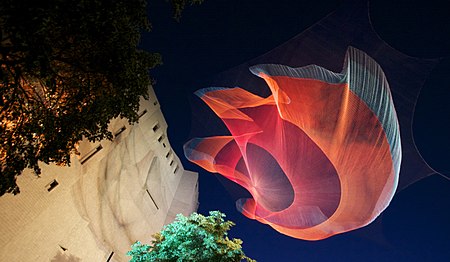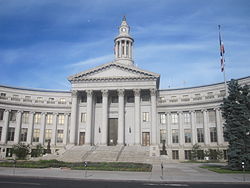Civic Center, Denver is a neighborhood in Denver, Colorado, United States. The northern part of the neighborhood overlaps partially with the Denver Civic Center, an area of parks and civic buildings.
The U.S. Census estimated the population of the neighborhood in 2017 as 1,962. The neighborhood has become popularly known as the Golden Triangle, particularly since a redevelopment boom beginning in the 1990s.
The Civic Center neighborhood is one of the City of Denver's official neighborhoods designated for planning and city services' delivery purposes.
The boundaries of the official neighborhood are:
North – Colfax Avenue
West and south – Speer Boulevard
East – BroadwayIt includes the Civic Center Park and some of its surrounding government and cultural institutions that comprise the Denver Civic Center, although not the center's Lincoln Park, not the Colorado State Capitol building in the center's east end, and not the center's few buildings north of Colfax.
The "Golden Triangle Creative District" is an organization of residents and property owners which is an officially-recognized Registered Neighborhood Organization, and was formerly known at the Golden Triangle Neighborhood Association. This organization defines its area to be slightly larger, with its eastern border at Lincoln, one block further east (and thereby including Lincoln Park). This neighborhood association notes that it spans 45 city blocks with 16 or more galleries and museums and with dozens of restaurants and stores. The creative district became official in 2016. In 2018 it began an effort to become, further, a business improvement district which would be able to assess taxes and improve public infrastructure.The Downtown Denver Partnership and the Golden Triangle Neighborhood Association define the Golden Triangle as extending one block east to Lincoln Street, thereby incorporating almost all of Civic Center Park and the institutions surrounding them (with the exception of the Colorado State Capitol in the Capitol Hill neighborhood and a few buildings to the north of Colfax Avenue). The main arterial street through the Golden Triangle is Bannock Street; 13th, 14th, and 8th avenues are important east-west arterials as well. All of the streets that provide the borders for the neighborhood (Lincoln/Broadway, Colfax, and Speer) are important transportation corridors for Denver.












